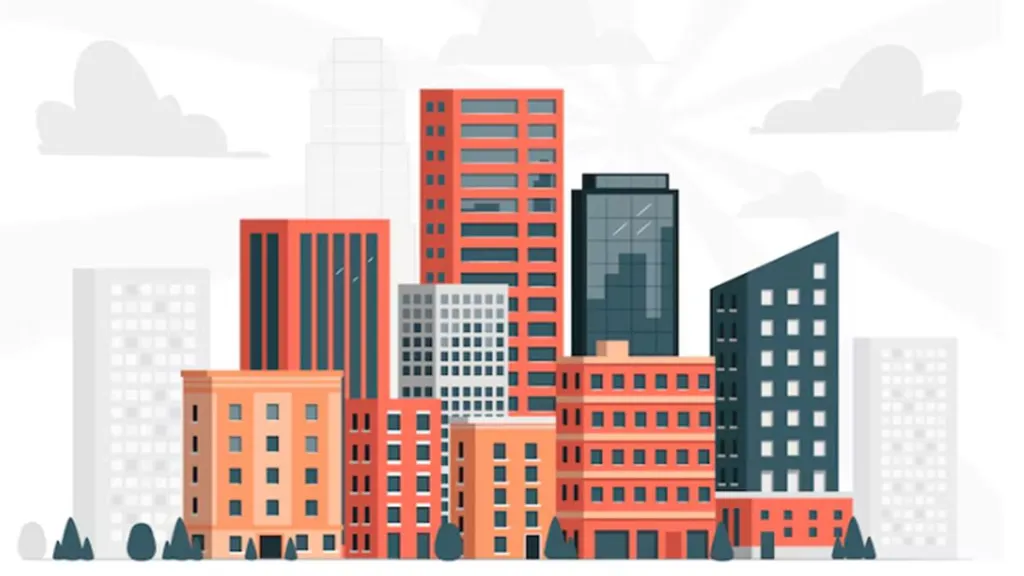The appeal of India’s Tier 2 and Tier 3 cities is significantly influencing the real estate sector, spanning from tranquil areas to thriving urban centers. Factors such as a burgeoning population, swift urbanization, and enhanced infrastructure are drawing not only new residents but also developers keen to explore the vast opportunities these cities present.
Economic elements, including government funding for infrastructure projects and comparatively lower land prices than those in metropolitan areas, are fueling the demand for real estate development. These demographic shifts are fostering a consistent need for residential properties in these expanding urban locales. Previously eclipsed by their metropolitan counterparts, these cities are now experiencing a notable increase in residential real estate activities, propelled by various trends that are transforming the real estate market.
Urban infrastructure development is a key trend driving the real estate sector in Tier 2 and 3 cities. Government initiatives such as Smart City Mission, PMAY, and the Atal Mission for Rejuvenation and Urban Transformation (AMRUT) are playing a significant role, with major investments in roads, highways, public transportation, and even regional airports. These improvements enhance connectivity within these cities and link them to larger urban centers, making them far more accessible and appealing to prospective residents. ANAROCK’s recent Consumer Sentiment Survey reveals that 26% of property investors are now favoring Tier 2 and Tier 3 cities, highlighting a shift in real estate investment trends.
Also Read: Can you get interest-free loans? Here are five options
Piyush Kansal, Executive Director, Royale Estate Group, says, “Many Tier 2 and 3 cities are experiencing a surge in urban development, supported by government and private sector initiatives to enhance connectivity. This includes the construction of new highways, expanded airport facilities, and the establishment of business hubs and industrial zones. With such developments, we expect a continuous growth momentum in the sector, boosting local economies and making these cities more accessible and livable.”
Moreover, as the buyers’ lifestyle changes, there’s a shift in consumer preferences towards luxury amenities and lifestyle offerings. A report from PropEquity reveals how the housing sales in the top 30 tier 2 cities have risen 11% to nearly 2.08 lakh units in the financial year 2023-24. This economic uplift enables individuals to invest in luxury properties, leading to a burgeoning demand for premium housing.
Manit Sethi, Director, Excentia Infra, says, “The luxury residential segment is redefining the housing landscape of tier 2 and 3 cities. These luxury properties appeal to modern homebuyers seeking convenience, privacy, and security, all within a well-planned space that balances urban comforts. As the cities grow, housing trends like premium low-density developments, integrated townships, and plotted developments fuel the real estate sector’s expansion and are emerging as an ideal choice for wealthy buyers who seek quality life outside the crowded metros.”
Moreover, as demand for property continues to increase, these regions are witnessing steady value appreciation, making them attractive destinations for both investors and homebuyers. The relatively lower property prices compared to metro cities, combined with the ongoing infrastructure improvements, are creating opportunities for long-term capital gains. As India is expected to urbanize at a rate of around 50% by 2050, the focus will inevitably shift to Tier 2 and 3 cities, making them the next promising destination for the real estate sector.
Yash Miglani, Managing Director, Migsun, says, “The luxury real estate market in emerging Tier 2 and 3 cities is booming as high-net-worth individuals seek a blend of sophistication and tranquility outside crowded metros. With the expansion of infrastructure and the rise of business hubs, Tier 2 and 3 cities are quickly becoming hubs for luxurious living, offering greater ROIs simultaneously. We recognize the potential of these markets and plan to offer unique projects to buyers that create vibrant, upscale communities sustaining long-term growth.”
Sagar Gupta, Sales Director, Trisol RED, says, “The Delhi NCR region is experiencing rapid urbanization, thanks to its strategically developed and enhanced infrastructure. The introduction of new roadways and upgraded public transportation systems has significantly improved the quality of life for residents in and around the city. As accessibility increases, there is a corresponding rise in the demand for luxury residences in well-connected areas. Locations like Gurugram and Noida have become preferred choices for luxury real estate due to their contemporary infrastructure and available amenities. Furthermore, millennials now represent 54% of home purchases, indicating their increasing impact on the real estate sector. Additionally, affluent buyers are contributing to the demand for properties that provide luxury and offer potential investment returns.”
Looking ahead, the future growth of the realty sector in these cities appears robust. As urbanization continues and the migration trend towards smaller cities accelerates, demand for luxury properties will only intensify.

